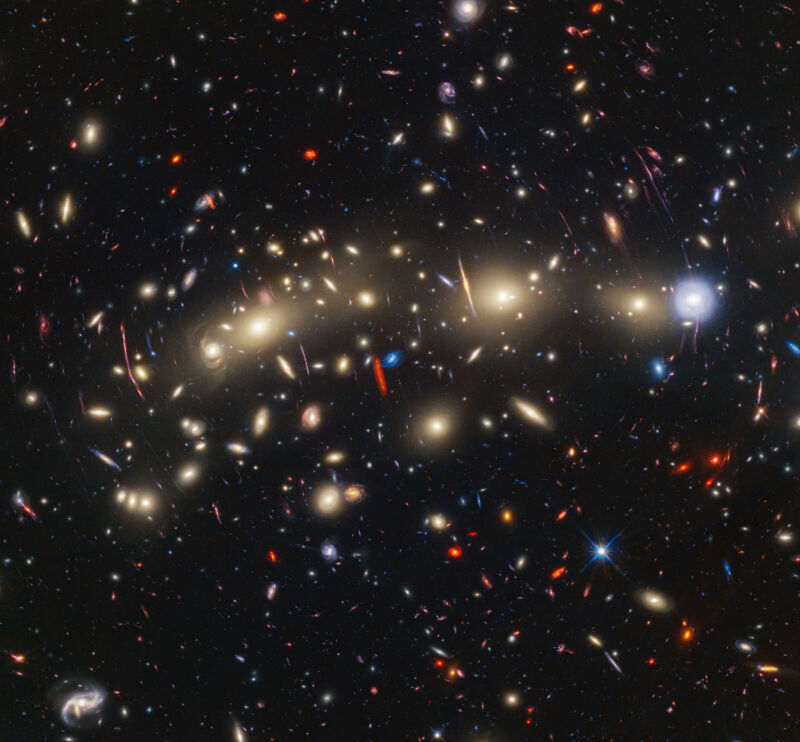Good morning. It is November 13, and today we’re traveling 4.3 billion light-years away from Earth, to a cluster of galaxies known as MACS0416. This distant object, which turns out to be two galaxy clusters that are colliding with one another, was first discovered in images captured by the Hubble Space Telescope.
Hubble, of course, brought “deep field” astronomy alive by publishing images with thousands of galaxies. Now, by combining Hubble observations with the new James Webb Space Telescope, NASA and its partners have produced an even deeper field image. The resulting panchromatic image, which combines visible and infrared light, gives us one of the most comprehensive views of the Universe ever obtained.
Here’s a little bit more from NASA about how this image was composed:
To make the image, in general the shortest wavelengths of light were color-coded blue, the longest wavelengths red, and intermediate wavelengths green. The broad range of wavelengths, from 0.4 to 5 microns, yields a particularly vivid landscape of galaxies.
Those colors give clues to galaxy distances: the bluest galaxies are relatively nearby and often show intense star formation, as best detected by Hubble, while the redder galaxies tend to be more distant and are best detected by Webb. Some galaxies also appear very red because they contain copious amounts of cosmic dust that tends to absorb bluer colors of starlight.
If this all makes you feel a little bit smaller, that’s OK.
Source: NASA, ESA, CSA, STScI.
Do you want to submit a photo for the Daily Telescope? Reach out and say hello.

Dr. Thomas Hughes is a UK-based scientist and science communicator who makes complex topics accessible to readers. His articles explore breakthroughs in various scientific disciplines, from space exploration to cutting-edge research.








